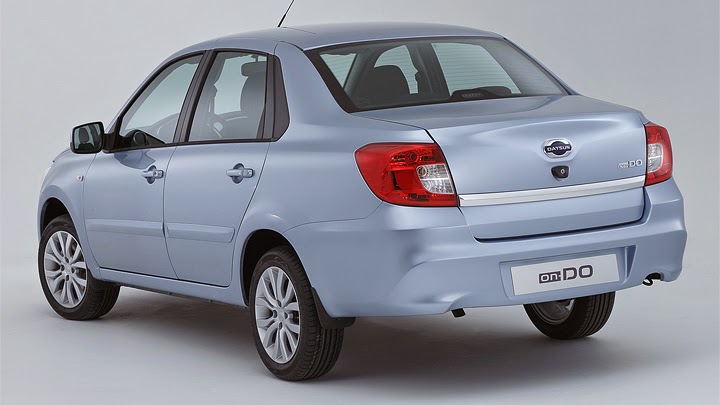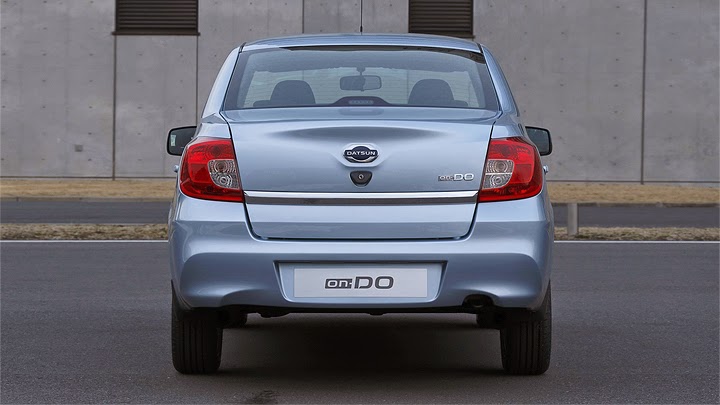
Have you noticed how simple are the names of Datsun’s modern automobiles? The main reason of that is to have easy pronunciation in multiple countries (as well as to avoid cacophonies), but they also have real meanings. Go and Go+, for instance, honor the company’s very first vehicle, which was called DAT-GO. When it comes to this sedan, on is the Russian expression for he, which is claimed to “underline the car’s strength, performance and masculinity”. DO, in turn, is a Japanese word with the idea of way and moving, which was applied to express the car’s proposal of accessible and innovative mobility. Despite on-DO isn’t the most charismatic one, it’s always nice to see a meaningful name among so many others like ATS, MKC or RLX.
This sedan’s name is so important because it also symbolizes the relation it makes between those two countries. For starters, Russia became the first market to have Nissan’s three marques (the other one is Infiniti). And since the Renault-Nissan Alliance has AvtoVAZ as its partner there, the opportunity was taken to return the “favor” of producing the first-generation Dacia Logan MPV in that market as Lada Largus: on-DO is basically a redesigned Lada Granta, expected to avoid competing with the latter by being cheaper. This is hard to notice because Datsun did a very good job, although only at the front and rear sections: since working at the sides is usually much more expensive, because it implies altering the car’s structure, both doors stayed exactly the same.







Noticing the conceptual differences between on-DO and Granta gets easier when you think of the first one being cheaper, rather than the latter being more expensive. Datsun’s sedan features a much more rational design, using clean surfaces and simple shapes. There are good-looking elements too, such as a very well-proportioned front fascia, but there were made very few concessions to them. Another one would be the black-plastic pieces behind the rear windows: since Datsun didn’t want third windows like both Granta’s and Kalina’s (which also use this set of doors), it had to use something to finish the rear door’s design. But when you look at the over-extruded trunk, nothing denies the company’s only concern was to increase its room.
Fortunately, Lada’s DNA prevented on-DO of repeating some of Go and Go+’s solutions at the cabin, like having the front seats as a single bench – bigger families will be deeply tempted to take a third person there, instead of the cargo for which it was intended. The Russian sedan offers a more conventional layout, composed with dark colors and few matte-chrome accents. In nowadays it already feels weird to see a modern dashboard without the bright lights of a digital touchscreen, but this is exactly what suits a low-cost car. This is also the reason why you can’t expect much from its equipment list. on-DO will offer ABS brakes and dual front airbags as standard, but it can be upgraded with items such as climate control and multimedia sound system.





Despite featuring exclusive room, Datsun’s sedan will repeat Granta’s level of internal space. Five occupants are going to find plenty of space, thanks to its 1.70-m width and 1.50-m height. Their cargo will also be easy to load because such long trunk carries 530 liters, besides helping the car to reach a 4.34-m length. If on-DO was taken to India, for instance, being longer than four meters would place it in an unfavorable tax situation, while if Russia had Go or Go+ it would be much harder (and expensive, therefore) to produce it there. Facts like these are what maintain Datsun’s position of investing on regional cars, while most automakers are converging to sell the same cars in multiple countries: any strategy is only effective within a certain range of application.
Once again taking advantage of the Russian operations, on-DO will be produced in Lada’s plant of Togliatti, side-by-side with Granta and Kalina. Its power will come from a four-cylinder 1.6L engine capable of 87 hp, which is paired to a five-speed manual transmission. Datsun will start to sell at that country few months later through “25 fully-branded dealerships supported by Nissan dealer investors”, which will be joined by other 75 over the next two years. When it comes to the pricing, the only data released so far is that on-DO will stay below the 400,000-roubles level, which means a very competitive figure. More official information will appear when it gets closer to the start of sales.